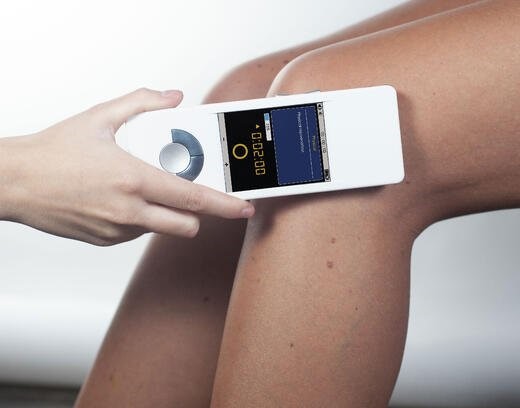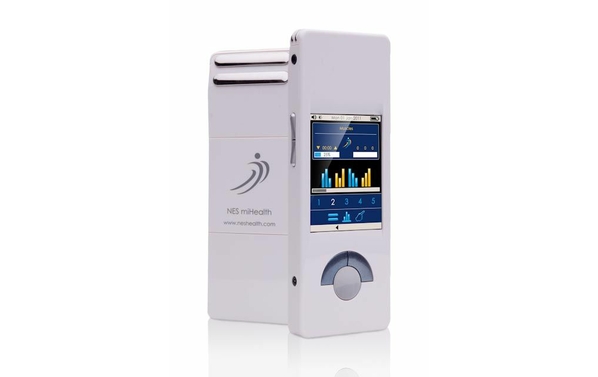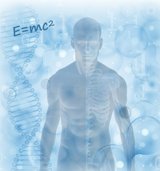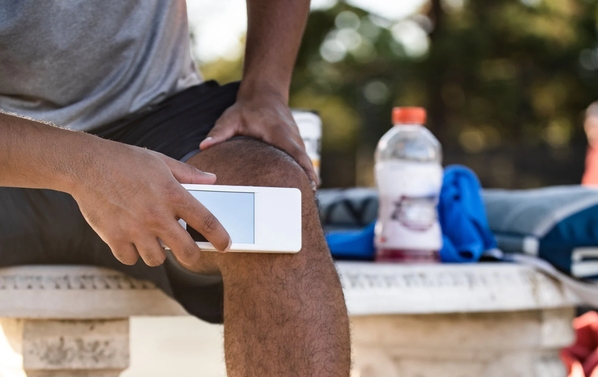Health and Wellness
Pain After Exercising?
Find out about the #1 piece of equipment you NEED and how to use the miHealth to help relieve pain.
We’re starting into our spring months now. The days are getting longer and warmer. Along with that comes the motivation (and an end to the excuses of it being too cold) to want to go start exercising or doing something outside again.
What generally tends to happen is you set the alarm clock. You get up bright and early for your run. You go for that run and then the following day, you’re hit with a dreadful soreness that overtakes your entire body.
Yesterday, or the day before, you may have felt good at the time you were exercising, but now you’re wracked with pain.
All the muscles you haven’t used in the past few months are angry. This is something you might expect this from the little stabilizer muscles you rarely ever use in your daily activities. For example, you suddenly realize there are muscles in your foot.
But you might also be experiencing post-exercise pain in your back, hips, knees, or Achille’s tendon.
We call this sort of pain, generally speaking, Delayed Onset Muscle Soreness (DOMS). As you train more, DOMS typically appears two days later.
It’s caused by the microtears in your muscle fibers (this is completely normal and part of the muscle-building process). Your body wants to repair these tears, so it increases inflammation local to the muscle tears. This is where those aches and pains come from.
That said, even though DOMS is completely normal, you still want to do everything you can to reduce it.
Ways to Prevent Pain After Exercising
You want to start off on the best foot possible. You might think that’d be warming up, but you’re not there yet.
Prevention Tip #1: Buy the RIGHT Shoes
The first thing you absolutely must do, if you are suddenly going to dust off your Lycra and get back out there, is to make sure that you've got the correct training shoes.
Unfortunately, training shoes have become so popular they’re commonly worn to work. There are some great fashion trainers around these days, however they're not necessarily built to support the body while you're exercising.
What specific shoe you need depends first on the activity you’re going to be doing. Cross trainers offer more side-to-side support while a running shoe won’t.
The second aspect is your gait. Whether you supinate, pronate, or are flat-footed has a huge impact on the shoes you need. This is likely the most important piece of exercise equipment you’ll ever own. Make sure you get the right pair of trainers by going to a store that can properly fit you (that’s generally NOT a chain store)
Prevention Tip #2: Warm Up and Cool Down Properly
If you’re only doing 20 minutes of High Intensity Interval Training, your warm-up and cool down might be just as long as the workout itself.
A proper warm-up is not doing a few jumping jacks, stretching to the sides, and twisting a few times.
You need to get the blood flowing throughout the muscles you’ll be using and your joints nice and ready to go. You’re pre-heating the oven or warming up your car.
You’ll know you’re adequately warmed up when you begin sweating and begin breathing heavier.
Cooling down is just as important. Jog or walk and stretch every muscle you just worked out.
Between getting the right shoes, warming up, and cooling down, you will reduce and prevent some pain after exercising. But you’re still tearing your muscles at a microscopic level, so there will always be some pain.
Dealing with Pain After Exercise with the miHealth
The miHealth can be incredibly helpful to relieve pain after exercising. In one outcome study, 93% of participants reported feeling better after using it just two times.

The miHealth incorporates PEMF technology, global scaling and also TENS.
It works by sending the correct frequency signals into the body. These frequencies are not static and they’re different for every situation.
We created specific frequency patterns to help with acute pain following exercise. When there’s any form of physical trauma, these frequencies can help speed up the body’s normal healing response.
Helen's Experience Using the miHealth
In the video above, you can see how Helen Frank, another NES Health Practitioner colleague, uses the miHealth, or read about it below.
A few years ago I had a real painful Achilles problem. I started using my miHealth with just using the top electrodes.
These electrodes send frequencies into the body to speed up the body’s normal healing process.
Here it is working on what we call myofascial.
It’s that sort of muscle coating that becomes quite tight. When people talk about foam rolling, this myofascial release is what you'll be working on. If you’ve ever foam-rolled before, you know just how incredibly painful that is.
The miHealth is entirely different and avoids this intense pain.
What's really neat about this frequency device is it's very intuitive. It can actually tell you where the body needs that sort of pain relief after exercising.
There are electrodes on the back of the miHealth. When we turn these electrodes onto the “on-body mode”, we're able to work directly with the body.
The functions we use for post-exercise pain are After Sport and Physical Rejuvenation. Once you have a function set and the correct level, you can apply the miHealth to the painful area.
As you put the miHealth on the body and begin dragging it across the area, there will actually be a sort of stickiness.
It will feel a bit like having Velcro tabs being pulled back. This is entirely normal.
What’s happening is the electrodes are sticking to the skin. That’s how you’ll know where the body needs help with post-exercise pain.
You’ll slowly run the electrodes over the area.
Due to the miHealth’s advanced technologies, it’s able to provide you the frequencies you need at that very moment to help work out those muscles. This will help prevent that pain that makes you feel miserable for the next few days after exercising -- and it'll do it without adding extra pain or destroying your nerve endings like some other devices might.
As that stickiness fades away, you’ll feel it working and know when you can stop. The pain may come back the following day, but by doing it again, you'll feel significant improvement.

Learn more about the miHealth device here and how you might benefit from it here.
Body-Field Scan
Ready to find out what's impacting your energy levels by using our bioenergetic scanning technology. Check out your body’s energy with a Body-Field scan, and gain deeper insight into your holographic self with our certified Bioenergetic Practitioner. For an In-Clinic visit click here, or, for a Telehealth (remote) session click here.
We offer a completely new, alternative and bioenergetic health care approach based on 21st century science, technology and quantum physics with personalized, holistic therapy solutions such as, NES body-field scan & therapy, miHealth biofeedback, PEMF, Rife and Vibroacoustic (VAT) healing modalities that can restore optimal health and well-being throughout the body, mind and spirit in the most natural way. Let us help you restore your health and energy!





